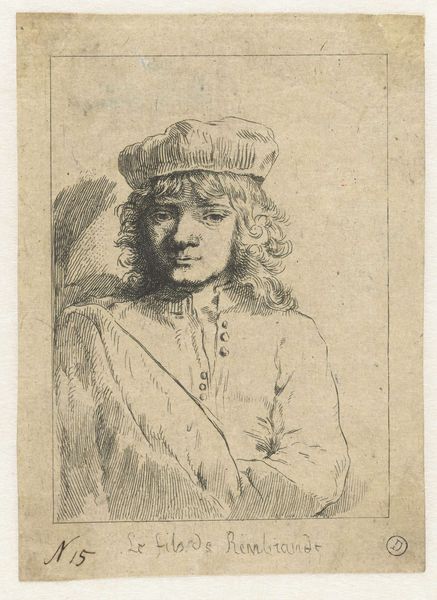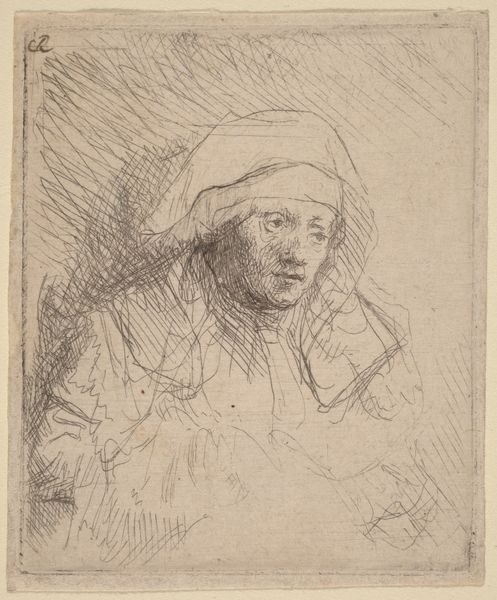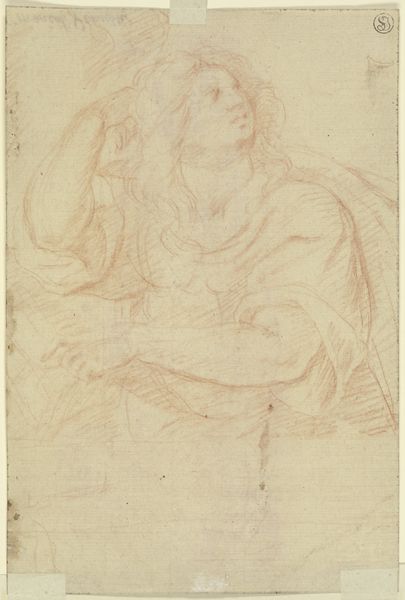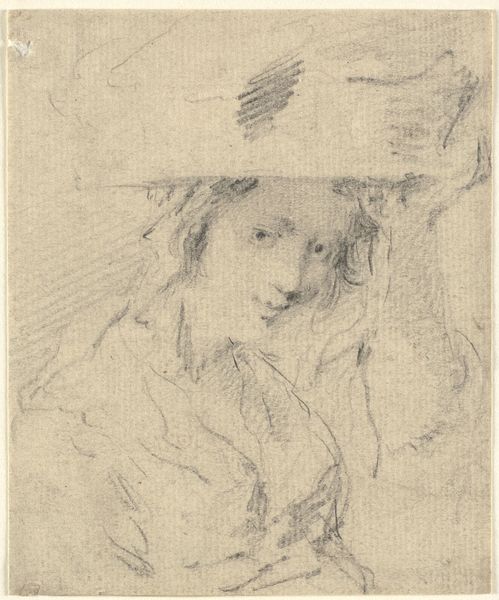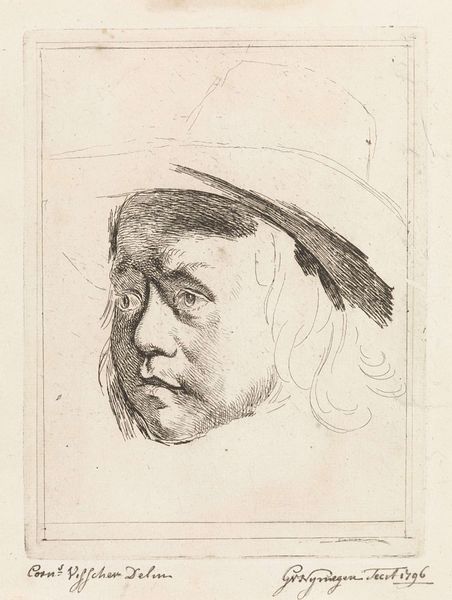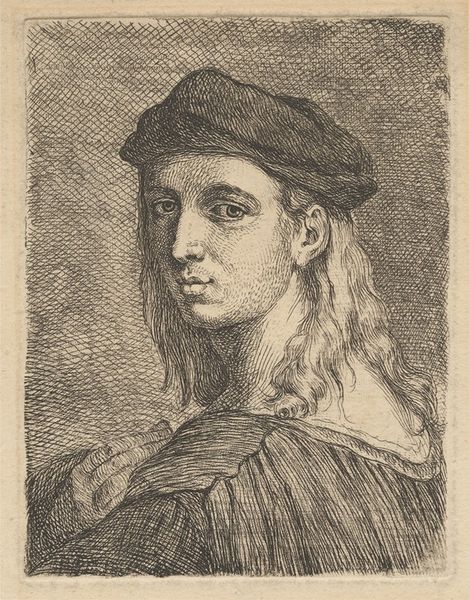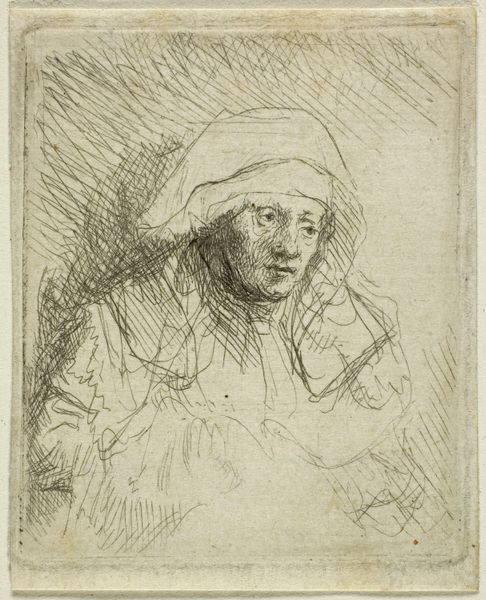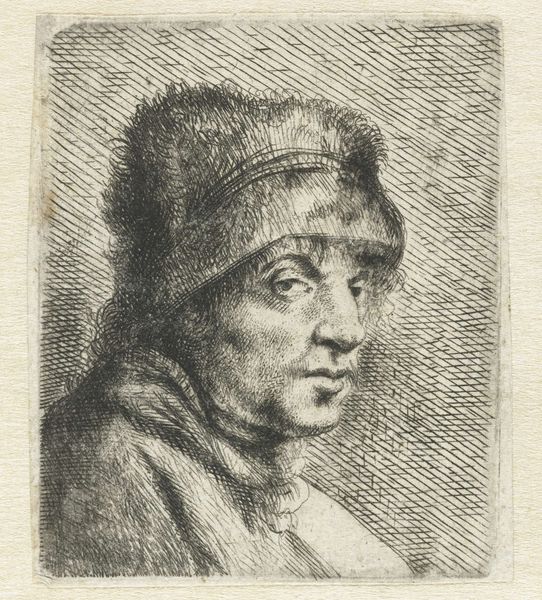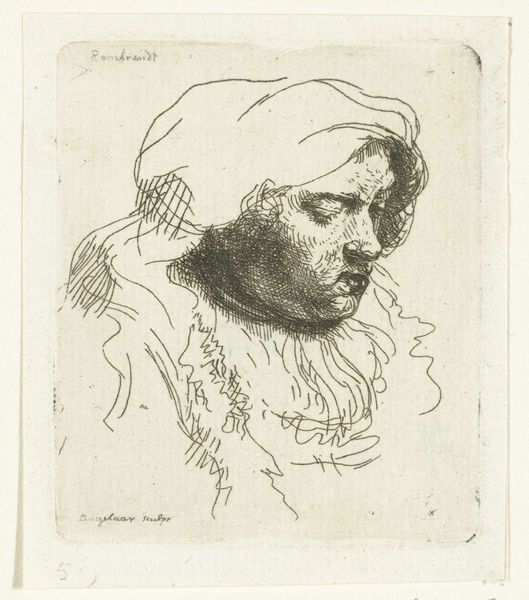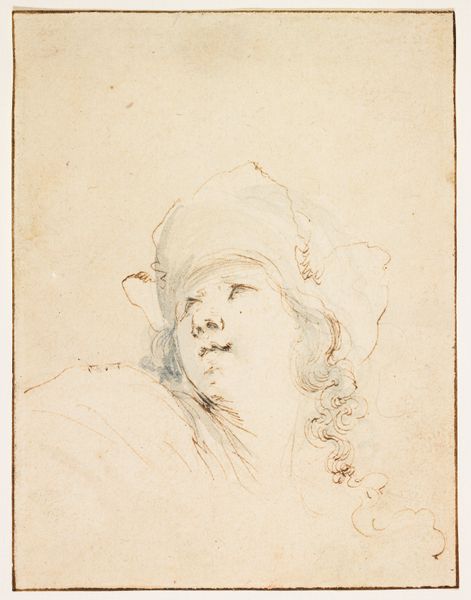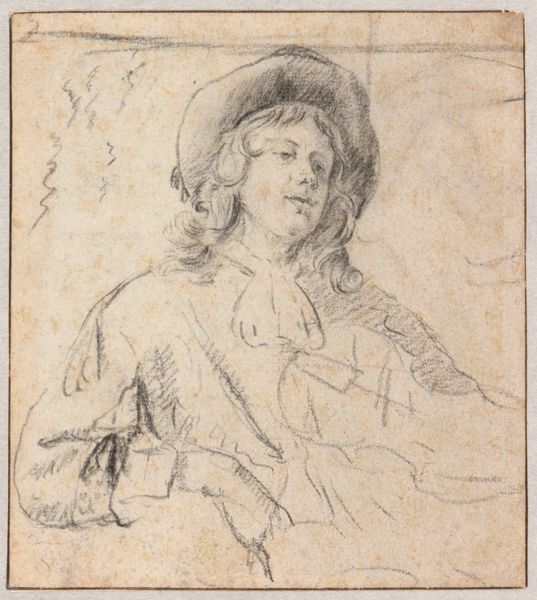
drawing, metal, etching, paper, ink, engraving
#
portrait
#
pencil drawn
#
drawing
#
dutch-golden-age
#
metal
#
etching
#
pencil sketch
#
paper
#
ink
#
pencil drawing
#
portrait drawing
#
engraving
Dimensions: height 105 mm, width 81 mm
Copyright: Rijks Museum: Open Domain
Editor: This is "Boy with a Feather on his Beret," a drawing attributed to Carel de Moor II, dating roughly between 1665 and 1738. It's an etching on paper, currently housed in the Rijksmuseum. The lines are so delicate. What do you see in this piece, particularly in relation to its time? Curator: Well, seeing a young man portrayed in this way immediately makes me consider issues of class and representation. The Dutch Golden Age, while known for its artistic innovation, also saw a rigid social hierarchy. A portrait, even a drawing like this, became a tool for constructing and displaying identity. Consider the beret with the feather – it's a deliberate choice, isn't it? Almost theatrical. Editor: It definitely seems like the artist is trying to convey a specific status or role. The beret feels performative. Curator: Precisely. Think about the concept of "the gaze." Who is this young man for? Who is he performing for? Is he emulating aristocratic fashion, and what does that tell us about social aspirations of the time? How does gender factor into it, when images of men are not necessarily as flamboyant as women? The act of portrayal itself becomes a political statement, capturing a fleeting moment in the subject's construction of self. Editor: That's a perspective I hadn't considered. It seems simple on the surface, but digging into it unearths all these layers of social commentary. I never considered the portrait could be interpreted as political! Curator: Absolutely! And notice that although the subject has a hat, which indicates upper social classes, the technique doesn’t really flatter them - there's roughness and softness that renders some human authenticity to it, like there may be doubts. That creates tension. Analyzing art in its socio-historical framework always opens up these new dialogues and complexities. It helps us reflect on how we understand gender, class, and identity through visual representation even today. Editor: This makes me want to do more digging! Thank you, I definitely learned a lot. Curator: And I learned so much with you as well. Art, it seems, invites ongoing investigation.
Comments
No comments
Be the first to comment and join the conversation on the ultimate creative platform.
